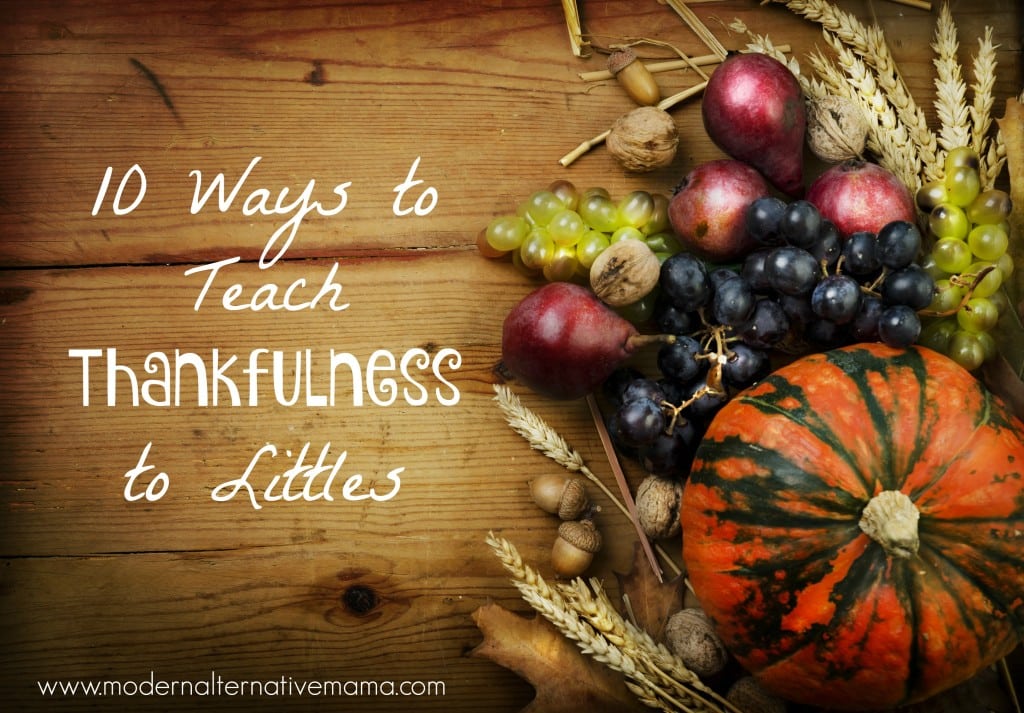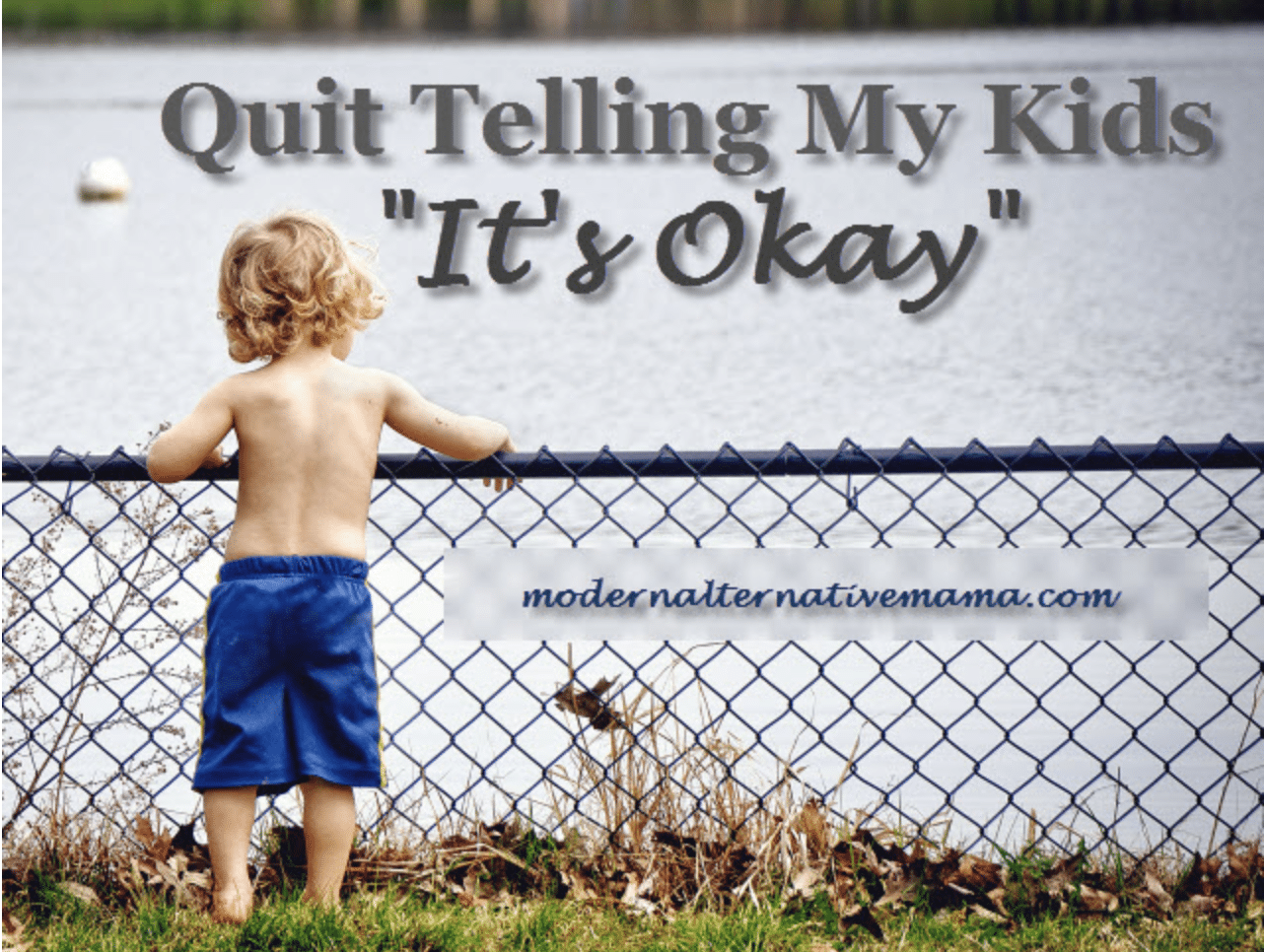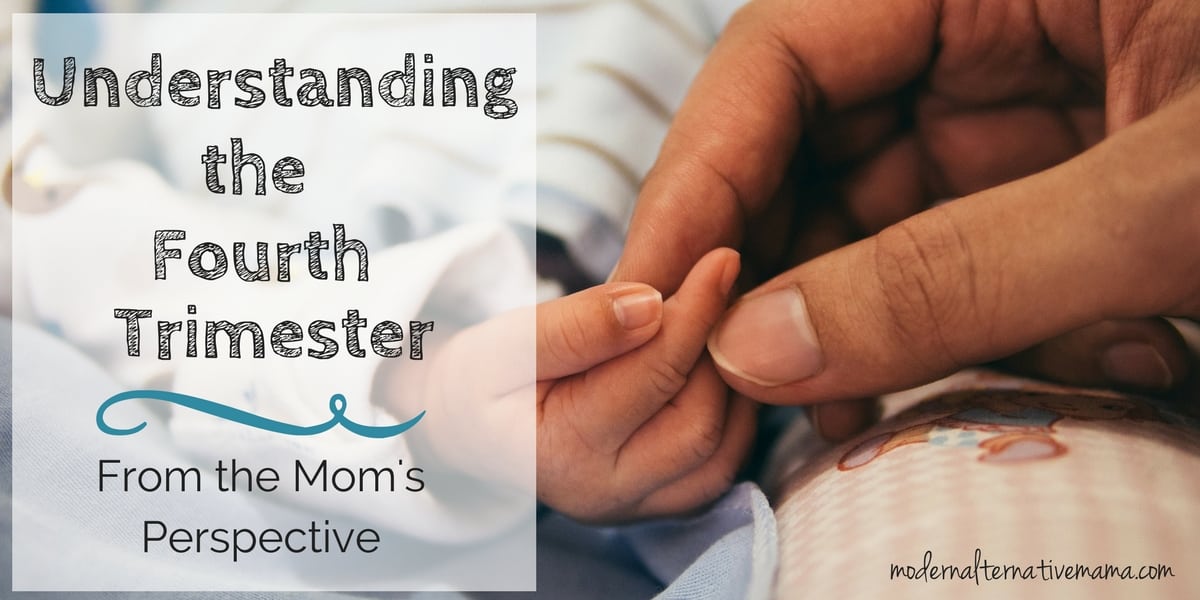With Thanksgiving coming up, thankfulness is on my mind.
As any parent of small children knows, thankfulness isn’t a given. When was the last time your children thanked you for cooking a meal, doing their laundry, or cleaning up after them? (Silence reigns.)
I know mine don’t. And when I’m annoyed with them for making so many messes and demand they help clean up, they look at me questioningly, like – seriously, why does it even matter so much? They’re children. They take things for granted.
(Not that they don’t thank people for gifts, or thank me for handing them a cup, or things like that. They have manners. But the overarching idea of thankfulness as a part of their spirit – they haven’t developed that yet.)
A Spirit of Thankfulness
Kids need our help to develop this spirit of thankfulness. And not, as we’d sometimes like to do, by saying “Be grateful! Do you know how much I do for you? Do you know there are kids who have nothing?” (Okay, I’ve said that once or twice in frustration.)
No, what we need to do is teach them about how to honestly feel gratitude. It’s so much easier to take things for granted, or to be upset at the loss of something (perceived or real) than it is to be thankful for what we have. That’s true for many adults, too — it’s just psychology.
This year, we’re going to try to encourage a spirit of thankfulness deliberately — it’ll be good for the whole family. We adults need reminders sometimes, too!
10 Ways to Teach Thankfulness
1. Say What You are Thankful For at Meals
One of the simplest ways we can teach thankfulness is to take time each day to say what we are thankful for. Around the dinner table is a great time, because the family gathers together and has a chance to talk. Many families do this at Thanksgiving, but it’s a good idea to do every day! Sometimes we all could use the reminder.
2. Make a Grateful Jar
A grateful jar (make your own) is a way for children to write or draw what they are thankful for on small pieces of paper, and then save it in the jar. Even young children can do this, and the full jar is a reminder of all of the things they have that are good! The visual reminder is powerful for many.
3. Model Showing Gratitude
One of the most powerful things we can do is to model gratitude ourselves. We can make sure to thank others sincerely when they do things for us, even little things – that includes thanking our children! We can talk about what we are grateful for, and why we are grateful for it. It is so easy to get caught up in the bad, and the wrong, and feel very negative and forget about good. It’s good practice to remember, frequently, all we have to be grateful for!
4. Donate to Operation Christmas Child
…or to another Christmas charity. Many churches will collect the needs of those in their own communities closer to Christmas and will ask church members to purchase specific gifts to go to those families. Giving to those who are in need is one small way we can remember how much we actually have, when not everyone does. It’s a concrete action to help understand gratitude, and to help others.
5. Serve in a Homeless Shelter
Around the holidays, people will need extra help. Volunteer to spend time in a homeless shelter, serving meals. Or, organize a local drive for food, clothes, or toiletries. (People need clothing and toiletries as much as they need food, especially in the winter!) Involve your children in this process, so that they can again reflect on all they have to be grateful for.
6. Give Small, Unexpected Gifts
People tend not to be as grateful for things that they are expecting. In fact, if someone is anticipating getting something and then it doesn’t happen, they feel a real sense of loss — even for things that were never theirs. That’s why a lot of kids don’t really learn gratitude for Christmas or birthday presents. They are expecting them.
At random times, give your child a small gift. Just because you love them. Choose something small that will be meaningful, and don’t let any routine or habit develop so that they don’t come to expect anything. Encourage them to do the same for friends and loved ones (with your help). Unexpected, loving gestures help people to feel very grateful and loved.
7. Bedtime Gratitude Prayers
Often times, when people pray at bedtime, they share things that are hard or ask for blessings. Rarely do they deliberately share praises or things they are thankful for. When praying with your children, remind them to thank God for the things that blessed them that day.
If praying isn’t your thing, then spend time thinking about others you love and saying thanks for the good things in life while you chat before bed.
8. Count Your Blessings
Literally — sit down and see how many blessings you can name at once! Consider writing them on pieces of paper (little clouds would be cute) and putting them up on the wall in your home. Count to see how many you come up with! It might amaze you how many there are.
9. Create a Family Blessings Journal
Use a notebook for the whole family, and when something good happens, or you feel thankful for something, write it down. Every few days, go back to the journal and read all of the blessings you have had and remember to be thankful for them. This is especially helpful when you’re having a bad day and need a reminder of the good.
10. Focus on a Thankful Heart
It’s so easy to get caught up in all of the bad things that happen in life. We get stuck in traffic, our washing machines break, we lose something that matters to us. Instead of wallowing in the hard parts, think about the good parts. We have safe cars to drive and places to go! We have indoor plumbing with the help of shower regrouting melbourne and electricity! Use bad moments as teaching moments – telling your children how upset you feel, but that you are choosing to have a thankful heart and count the good things instead of focusing so much on the bad.
(By the way, it’s okay to feel angry, disappointed, and unhappy when things don’t go your way. This isn’t to say you shouldn’t feel those things. But once you have acknowledged that you feel that way, make a conscious choice to think about happier things and help yourself feel better.)






